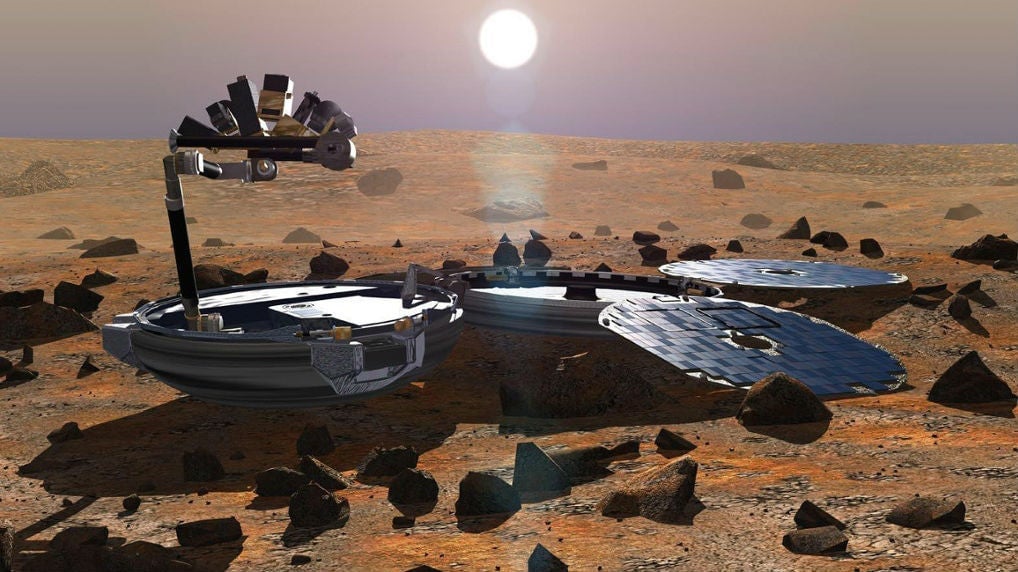NASA just discovered a missing Mars robot, last seen in 2003
A UK space robot has been found after 11 years of hanging out—intact—on the Martian surface, while the scientists who sent it thought it was obliterated on impact.


A UK space robot has been found after 11 years of hanging out—intact—on the Martian surface, while the scientists who sent it thought it was obliterated on impact.
NASA’s Mars Reconnaissance Orbiter snapped hi-res photos of the UK Space Agency’s Mars probe Beagle2 only five kilometers from its targeted landing site. By landing-a-spacecraft-on-Mars standards, that’s essentially a direct hit. The probe was meant to land on Mars on Christmas Day, 2003, but after inexplicably losing contact, scientists theorized that the landing was botched and it was destroyed.
The images reveal that while the probe actually landed safely, it didn’t fully deploy—so we’ll likely never be able to reestablish communication with it or glean any information about its 11 years as a Mars resident. But at least the original Beagle2 team members can sleep soundly at night knowing that the probe made it to Mars okay, and was not shattered in an unspeakable explosion.

Sadly, the head scientist on the project, Colin Pillinger, died last May. He also had a pivotal role on the Rosetta mission, proposing the instrument on the Philae lander that analyzed the soil on comet 67p. In November, the UK’s Royal Society commemorated Pillinger by naming a new award after him.
A few other Mars probes have lost contact while traveling through the Martian atmosphere or on impact with its surface. The Beagle2 discovery provides a glimmer of hope that these probes could have made it to Mars safely, even if communication will never be reestablished.
But even before the discovery, Beagle2—which was supposed to search for signs of Martian life—was seen as a useful adventure. Here’s a video of its mission manager, Mark Sims, talking about the project. “Beagle2 wasn’t a failure by any stretch of the imagination,” he says. “It trained a whole generation of engineers and scientists in Mars exploration.”